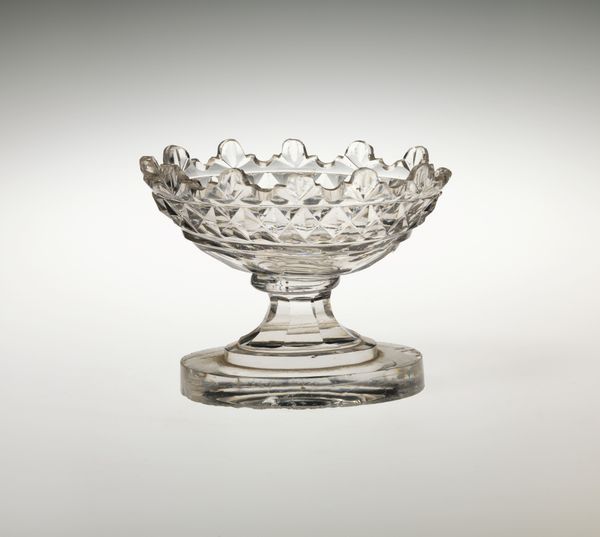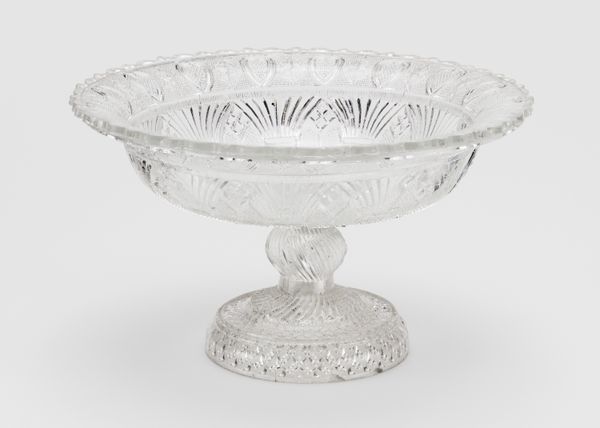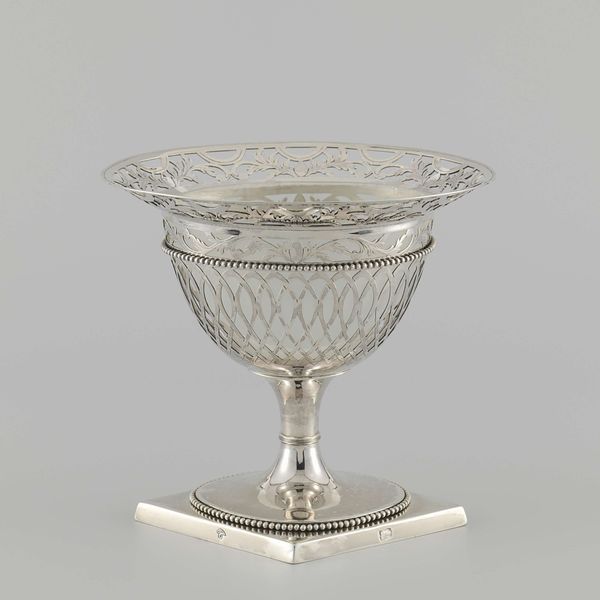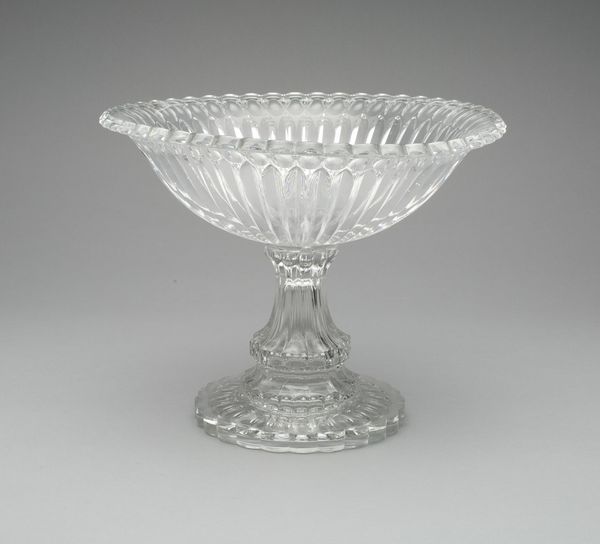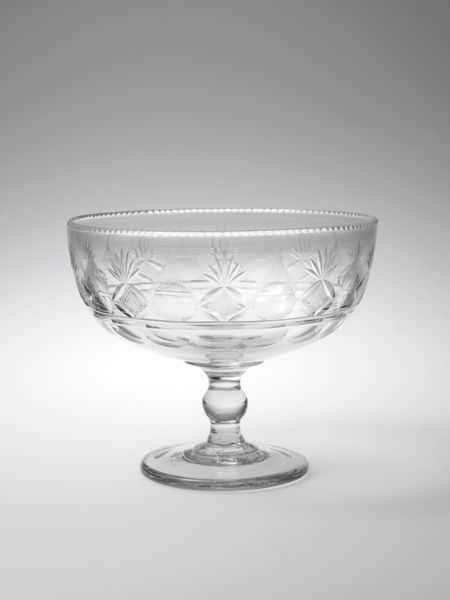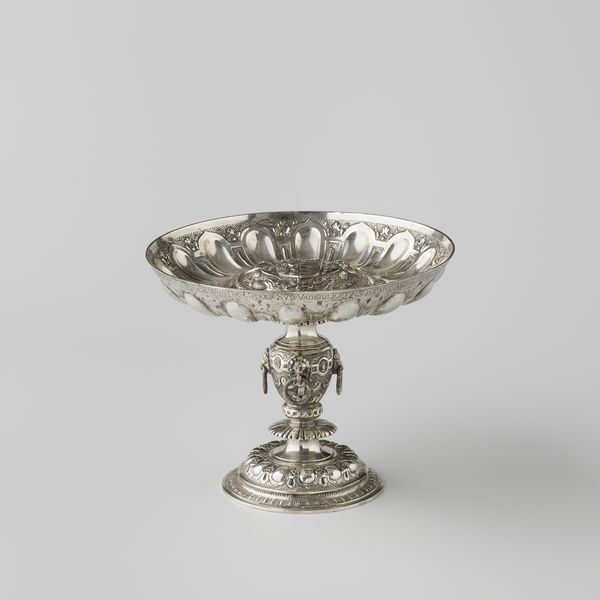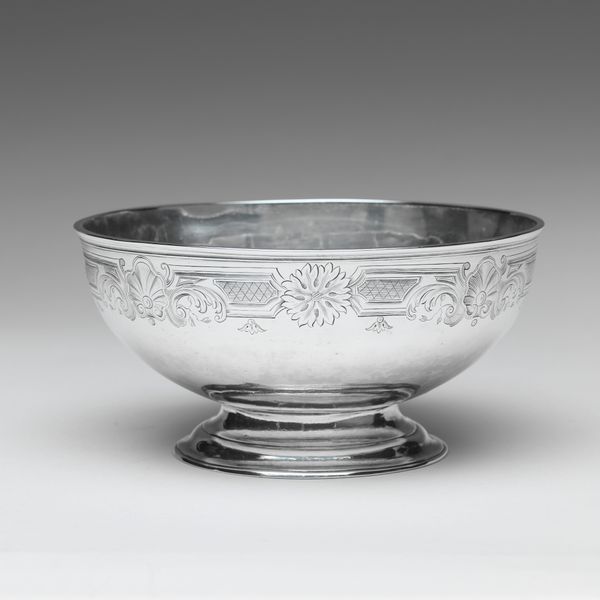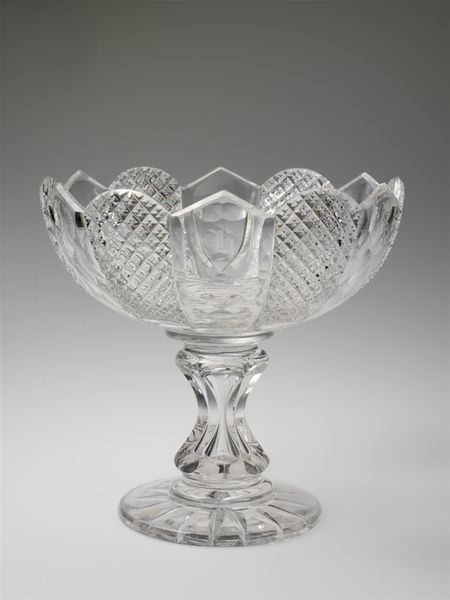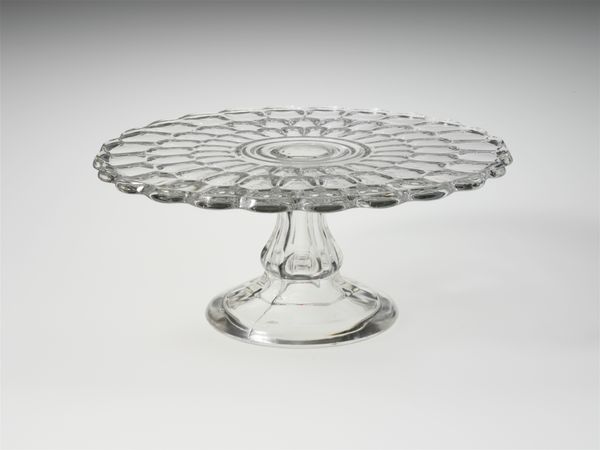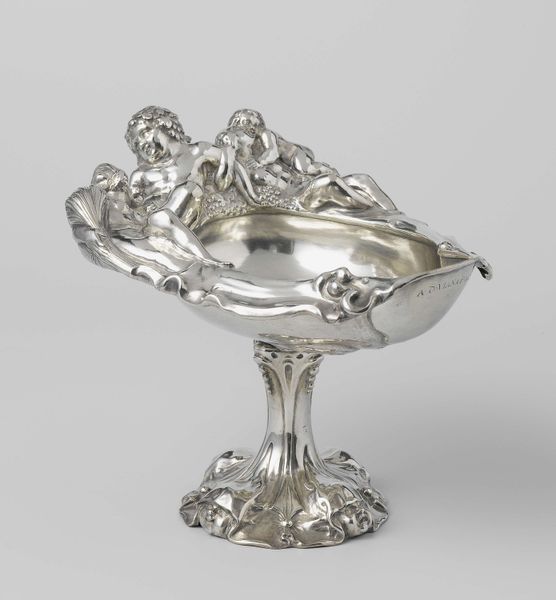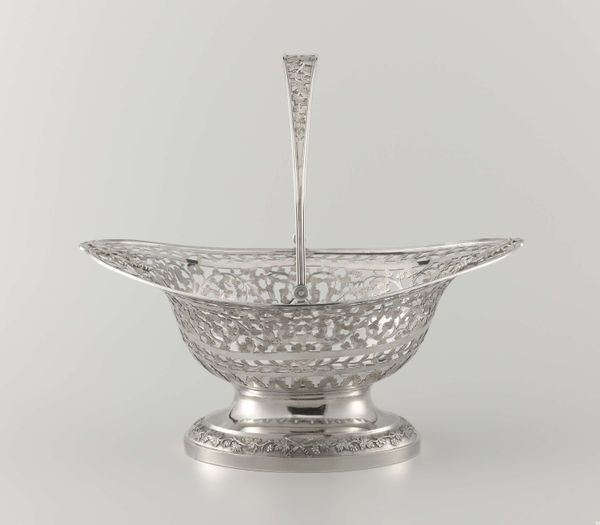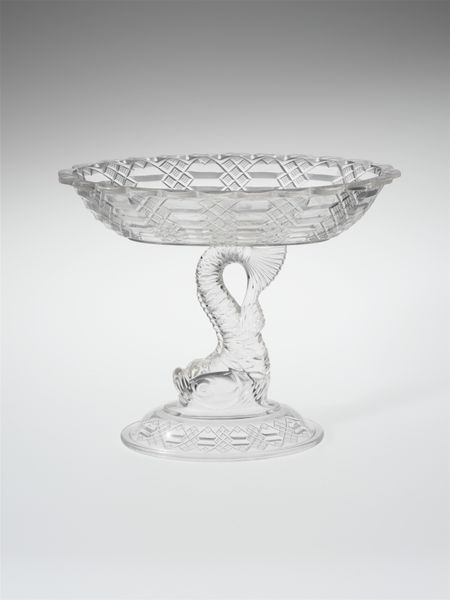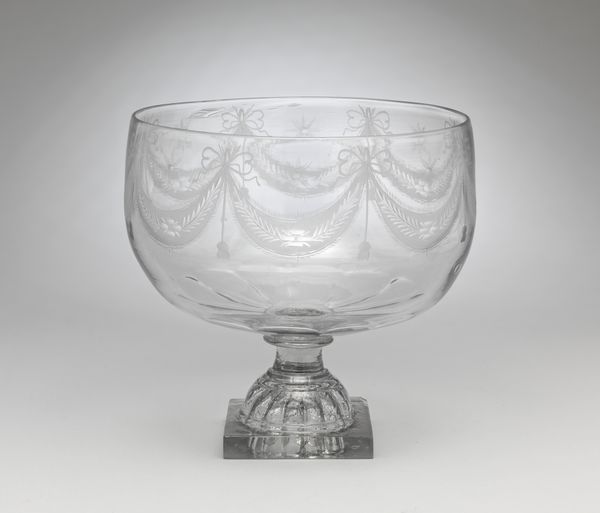
glass
#
glass
#
decorative-art
Dimensions: 11 in. (27.9 cm) Body diameter: 12 in. (30.5 cm)
Copyright: Public Domain
Curator: This dazzling object is a glass compote, created by Joseph Stouvenal and Company sometime between 1846 and 1856. Its elegant form can currently be appreciated here at the Metropolitan Museum of Art. Editor: Wow, my first impression is pure extravagance! The elaborate cuts on the glass make it shimmer. It feels like it was made to be the star of some Gilded Age feast, laden with candied fruits. Curator: Indeed, this object reflects more than just an interest in aesthetics. This compote illuminates significant historical narratives, showcasing a specific chapter in American industrial history and artisanal labor. Editor: It is visually impressive, the way all those cuts play with light, but thinking about it in terms of production is sobering. What can we tell about who made it, and under what conditions? What social classes were using it, and what does its form tell us about gender and power dynamics in mid-19th century American culture? Curator: The labor required to produce this compote using techniques developed during that time would be quite specialized, pointing to developing factory environments where skilled workers refined processes in glass making and cutting. Analyzing archival records could tell us more about wages, labor relations, and the evolution of craft into industrial manufacturing. Editor: It seems the glass is elevated – almost literally – onto another plane. This type of object almost dictates a scene, creating a sense of what kind of person owned something so fine. Did only white households hold the economic means to obtain an art object like this? To what degree were non-white Americans part of these booming new industrial practices? Curator: By examining business records and production techniques, we can learn about the flow of material goods, trade routes, and their accessibility to different social classes and ethnic groups within that time frame. Understanding the material origins of this glass underscores broader dialogues around exploitation. Editor: This piece is more than meets the eye. Thinking about it this way helps connect seemingly static objects like this compote to relevant contemporary debates about equality and class. Curator: I find this methodology enriches and encourages thinking about not just the 'what' in art history, but how the object became. Editor: Precisely, looking closer lets us question dominant narratives around progress.
Comments
No comments
Be the first to comment and join the conversation on the ultimate creative platform.
